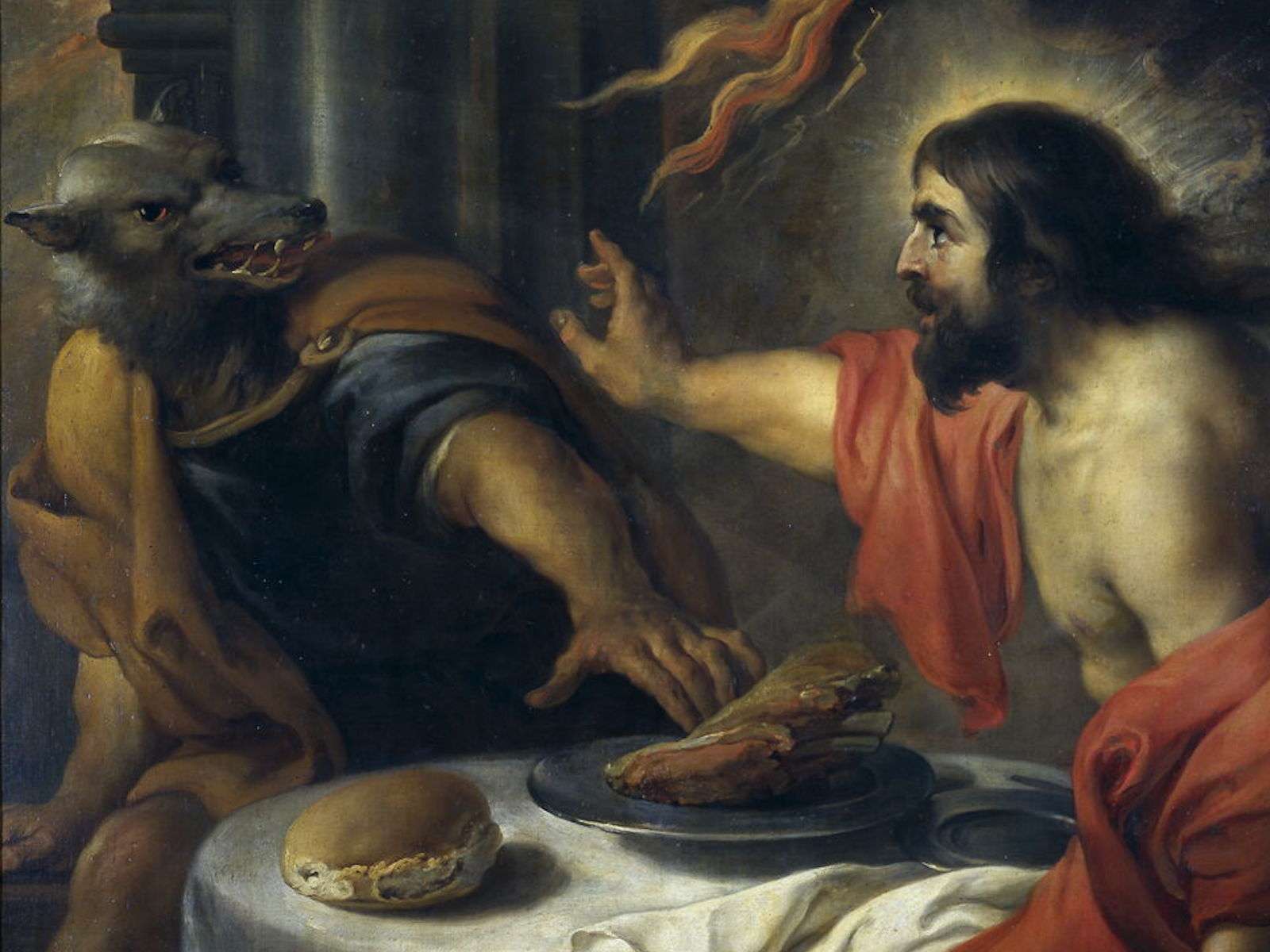It’s a tale as old as time. Man hunts animal. Animal bites back. Man shape-shifts into monstrous hybrid beast.
We tend to think of horror characters as things that are always modern. Or even if we acknowledge the past, we don’t go much further back than the black-and-white era of Hollywood, when Lon Chaney was the Wolf Man terrorizing his prey. No doubt that and similar depictions helped raise the consciousness of werewolves in popular culture. For example, plenty of appearances in horror comics of the 1950s and 60s.
But the idea of werewolves and depicting them through scary werewolf art of different kinds goes back much further than the 20th Century.
Earliest Werewolves
Often credited as the earliest and prominent literary mention of a werewolf is in one of the classics of Western literature, Ovid’s Metamorphoses. Written around 8 A.D., the work is all about transformation in its many forms. Because that is the world and human nature. Transformation. Narcissus turns into a flower. Arachne is turned into a spider. Story after story tells of people transforming, which is one of the most common themes of Greek and Roman mythology, but also storytelling overall. So it isn’t a surprise that it includes the story of Lycaon.
[image lightbox=”2″ caption=”Ovid’s Metamorphoses, Hendrik Goltzius, 1589″]https://www.scarystudies.com/wp-content/uploads/2021/01/werewolf-art-Goltzius-1.jpg[/image]Of course what has evolved when it comes to scary werewolves and the lore that exists around them has transformed itself over the years. But the story of Lycaon is arguably the most influential work of werewolf storytelling, as it was widely known because of Ovid’s Metamorphoses. And it spawned so much werewolf art and parallel tales for centuries after. It also astutely suggested the complex idea of physical transformation while keeping semblances of their previous form. Which has become a very common trope of many werewolf tales. That although a person may change into a monster, somewhere underneath they are still the same person.
[image lightbox=”4″ caption=”Júpiter y Licaón, Jan Cossiers, 17th Century”]https://www.scarystudies.com/wp-content/uploads/2021/01/scary-werewolf-art-3.jpg[/image]Real-world Werewolves
Fast forward hundreds of years and werewolves are still part of storytelling and lore. Unfortunately like witchcraft, werewolves are believed to be real threats to the moral code. And regular people are subject to werewolf trials in the same way that we often hear about witch trials. In fact, these happened before the famous Salem witch trials.
Werewolf lore took many forms in many different lands. As with many such legends, they had a modicum of truth buried in the legends. The mythological Centaur is often credited as people who first see men riding horses from afar and incorrectly telling stories of half-man, half-horses. Dragon lore is often credited as ancient people discovering dinosaur fossils and creating their own explanations (not far fetched, if you ask me). Well, in the case of werewolves, there are well-known and savage Viking tribes known as Berserkers who wore wolf and bear skins in their rampaging. Imagine an army of these pillaging your village and you can imagine tales of half-wolf creatures becoming prominent throughout the countryside.
[image lightbox=”4″ caption=”Werewolf, Lucas Cranach the Elder, 1512″]https://www.scarystudies.com/wp-content/uploads/2021/01/scary-werewolf-art-LUCAS-CRANACH-THE-ELDER-2.jpg[/image]Scary Werewolf Art Through the Ages
Not surprisingly, art depicting werewolves evolved, but continued. Just like in the case of vampires and witches, there became a deep religious undertone in many cases. Of course all monsters and villains were anti-Christian, and so religion was either the victim or the cure in many ways.
[image lightbox=”4″ caption=”Werewolf art, France, 19th Century”]https://www.scarystudies.com/wp-content/uploads/2021/01/scary-werewolf-art-10-2.jpg[/image]New Scary Werewolf Art by Jakub Rozalski
Art depicting one of the most famous creatures in popular culture, not surprisingly, has not gone away one bit. One notable modern example is the werewolf art of Jakub Rozalski. What is great about his work is that it looks like classical art from a different time. It places modern sensibilities in a location and style of our past. He does this for science fiction work, which is remarkable, but he also places werewolf creatures in a previous place and time, creating a sense of unease that is both magical and haunting.
[image lightbox=”1″ caption=”Art by Jakub Rozalski”]https://www.scarystudies.com/wp-content/uploads/2021/01/werewolf-art-Jakub-Rozalski-.jpg[/image] [image lightbox=”1″ caption=”Art by Jakub Rozalski”]https://www.scarystudies.com/wp-content/uploads/2021/01/mr-werewolf-scary-werewolf-art.jpg[/image] [image lightbox=”1″ caption=”Art by Jakub Rozalski”]https://www.scarystudies.com/wp-content/uploads/2021/01/scary-werewolf-art-mr-werewolf.jpg[/image]Last Updated on December 2, 2021.

